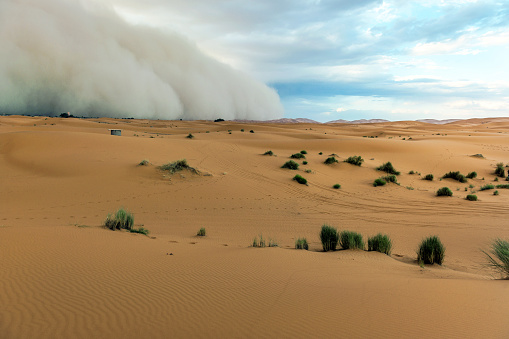
Middle East dust storms can increase monsoon rainfall in India: Study
The dust, transported to the Arabian Sea, could enhance rainfall over South Asia, especially during severe drought, say researchers from IIT-Bhubaneswar

The erratic rainfall patterns seen in the country during the monsoon reflect the impact of climate change on India. A new study has shown how frequent dust storms in the Middle East, triggered by climate change, could play a big role in increasing the amount of rainfall in India during the monsoon season.
It is known that deserts are the regions that receive the least amount of rainfall among all biomes. However, they are also known to modulate global and regional climate through various pathways. One such intriguing insight was put forth in a recent article published in the Nature Publishing Group’s journal, Climate and Atmospheric Science, by researchers at IIT-Bhubaneswar.
The study shows that dust emitted from the Middle Eastern deserts transported to the Arabian Sea could enhance rainfall over South Asia, especially during severe drought episodes over the Indian region. The first indication of this was provided by a study published in the journal Nature Geoscience in 2014 by the same team and collaborators abroad.
Dust aerosol action
“Desert dust aerosols emitted from the Middle Eastern/Arabian and North African deserts increase rainfall over India at short time scales of about a week or two,” said the study.
Also read: Dust storm in the desert depletes Mumbai’s air quality to Delhi levels
This is made possible by the warming induced by this dust over the Arabian Sea, which acts as a source of energy to speed up the monsoon circulation (wind, moisture) towards the Indian region, it added.
“This relationship is now stronger during drought years associated with El-Nino. They also indicate that this dust induced rainfall enhancement is widespread across the whole South Asian monsoon domain, often occurring as a pulse that triggers short-term increased rainfall in an otherwise dry situation,” said the study.
Nature’s compensation
“India has faced droughts or large-scale deficits and changes in the spatial pattern of monsoon rainfall due to ongoing climate change. However, with global warming in place and changing wind patterns, we can expect a rise in dust storms across Middle Eastern deserts in the coming years,” said Dr V Vinoj, Assistant Professor, School of Earth Ocean and Climate Sciences, IIT-Bhubaneswar.
“This dust may get transported to the Arabian Sea under favourable conditions and trigger short heavy rain spells over the Indian region. In other words, Nature compensates for the deficit created by human activities. It is well established that anthropogenic factors reduce rainfall and continue to do so for long-timescale (decades),” Dr Vinoj said.


